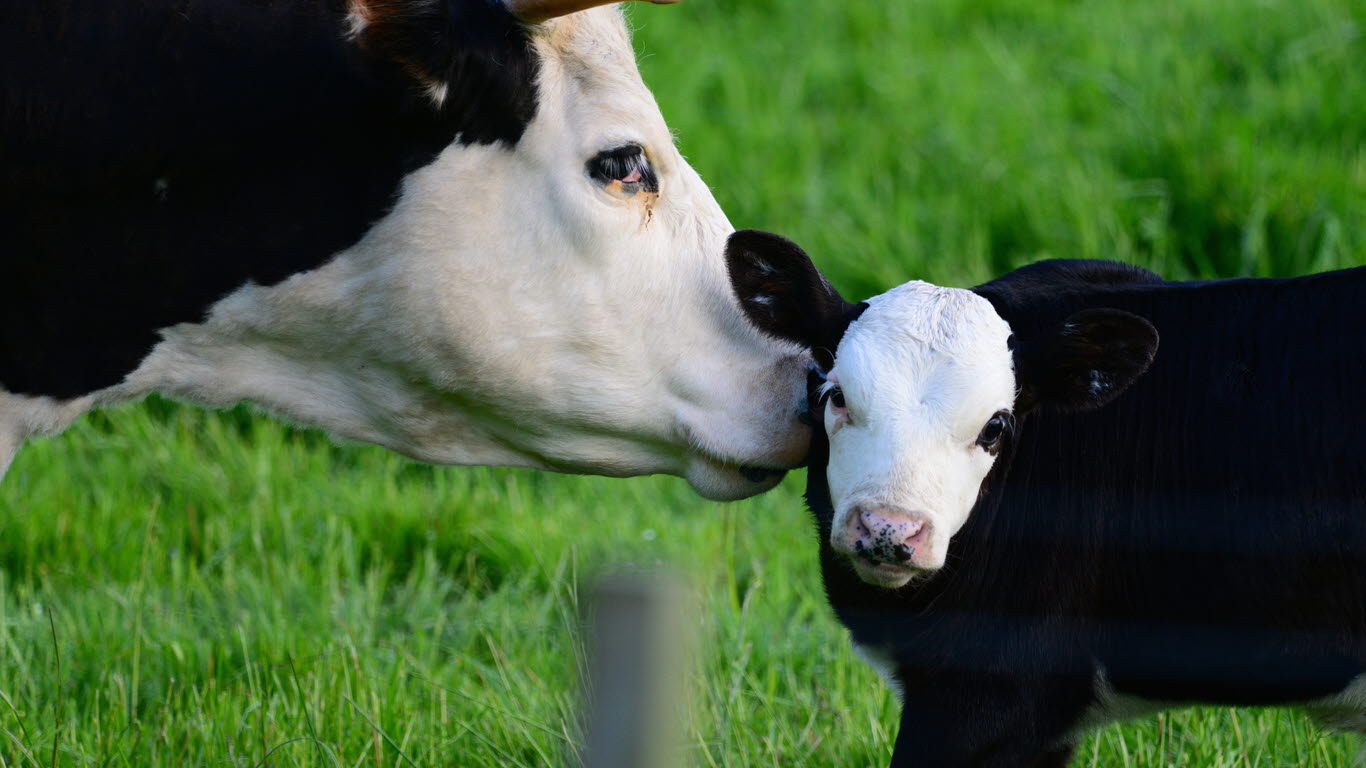Calving explained

Calving is the act of a cow giving birth to a calf, with the calving season occurring every year. It is a major event on any farming calendar - but especially in intensive beef and dairy production. In this article, we will outline the process of calving, what time of year it occurs and what can go wrong that may require a veterinarian.
What is calving?
A cow’s pregnancy lasts for an average of 283 days or approximately 40 weeks, similar to the length of human pregnancy. At the end of pregnancy, cows go through ‘calving’ or labour, which involves the following three stages:
- Stage 1 - Where the cervix (the internal opening to the uterus/womb) opens. This stage can last between 1- and 24-hours.
- Stage 2 - Where the calf moves into the birth canal and abdominal contractions begin. The amniotic sac (‘water bag’) which contains the calf will become visible at the cow’s back end. Generally, the calf should be born within 2 hours of the ‘water bag’ appearing.
- Stage 3 - This occurs once the calf has been born and involves the delivery of the placenta. The placenta, or ‘afterbirth’, is a collection of tissue which provides nutrients to the calf during pregnancy.
When does calving occur?
The timing of calving on farms is largely based on matching the amount of food (pasture) available to the cow with their energy needs during calving. For example, a cow will require more pasture when they are lactating than when they are in early pregnancy. The amount of food available when the calf is weaned (stops drinking milk) may also be considered.
The timing of calving is very area dependent and influenced heavily by weather patterns. In Victoria, there are two major growth phases of pasture - in autumn and spring. Therefore, commonly calving occurs in autumn/winter or spring.
Occasionally, there may be ‘split calving’ where part of the herd calves in autumn/winter, and the second group calves in spring. Generally, the calving season or period (time over which cows in the herd are calving) is kept as short as possible and lasts approximately 3-9 weeks. However, this may vary between farms.
What is Dystocia?
Dystocia is when a cow cannot give birth without external assistance from either an experienced farmer or veterinarian. The most common causes of Dystocia are:
- Malpresentation - the calf is in the wrong position to be delivered normally. For example, the calf is coming with its back legs first, instead of front legs or has its front legs folded underneath it, rather than forwards in the normal ‘superman’ position.
- Maternal-fetal disproportion - the calf is too big to fit through the cow’s pelvis. This can often occur in heifers (first-time calvers).
- Uterine inertia - the uterine muscles or cow becomes too weak to push the calf out.
Depending on the cause of dystocia the veterinarian may supply drugs to assist delivery or alternatively provide an epidural and move the calf into a position where it can be delivered normally. If the calf cannot be delivered naturally, they may perform a caesarean. They will also often assist in the aftercare of both calf and cow.
If dystocia is not corrected, it can result in uterine prolapse (where the uterus is pushed outside the cow), calving paralysis (where the nerves controlling the cows back legs are damaged) and even death of the calf or cow. If you suspect a cow is experiencing difficultly calving please contact your local veterinarian for advice.
